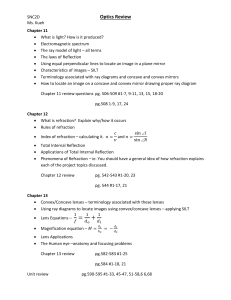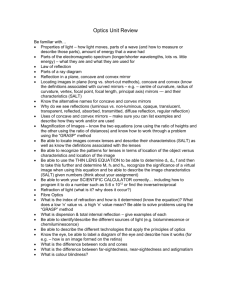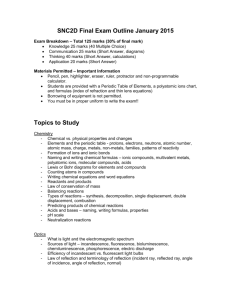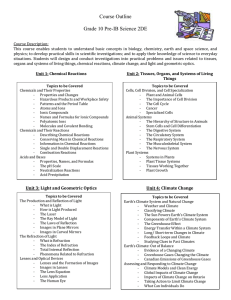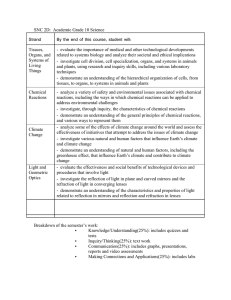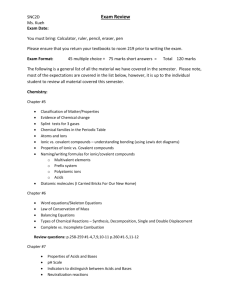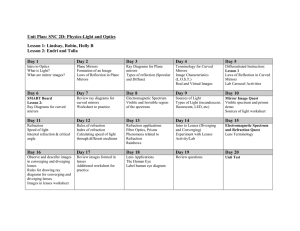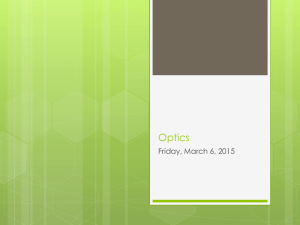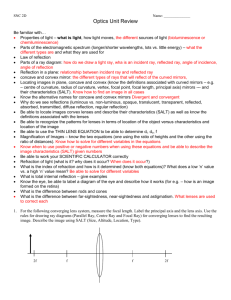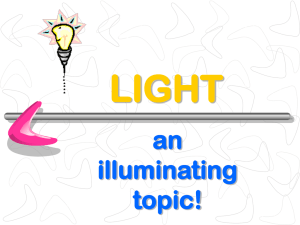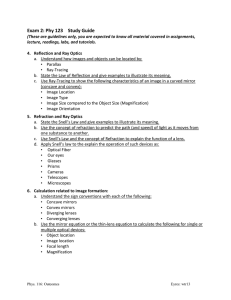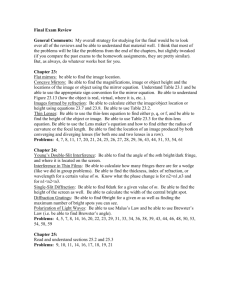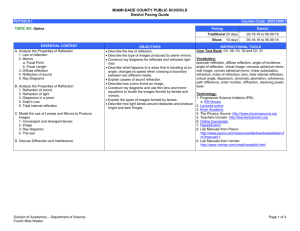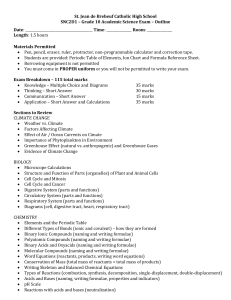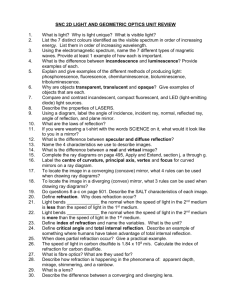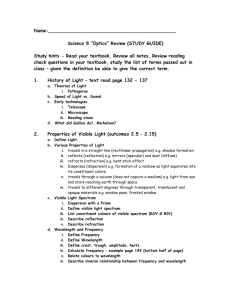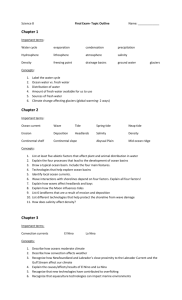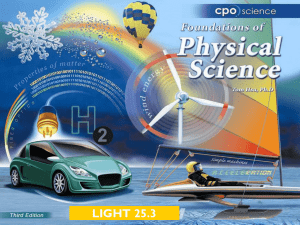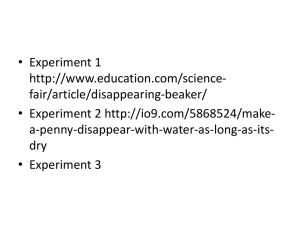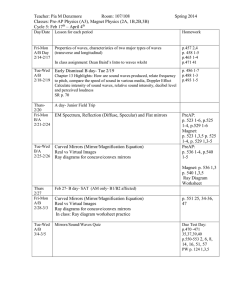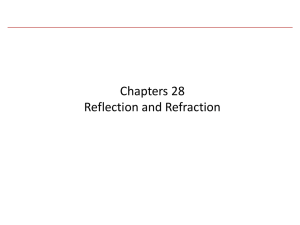Review Questions
advertisement
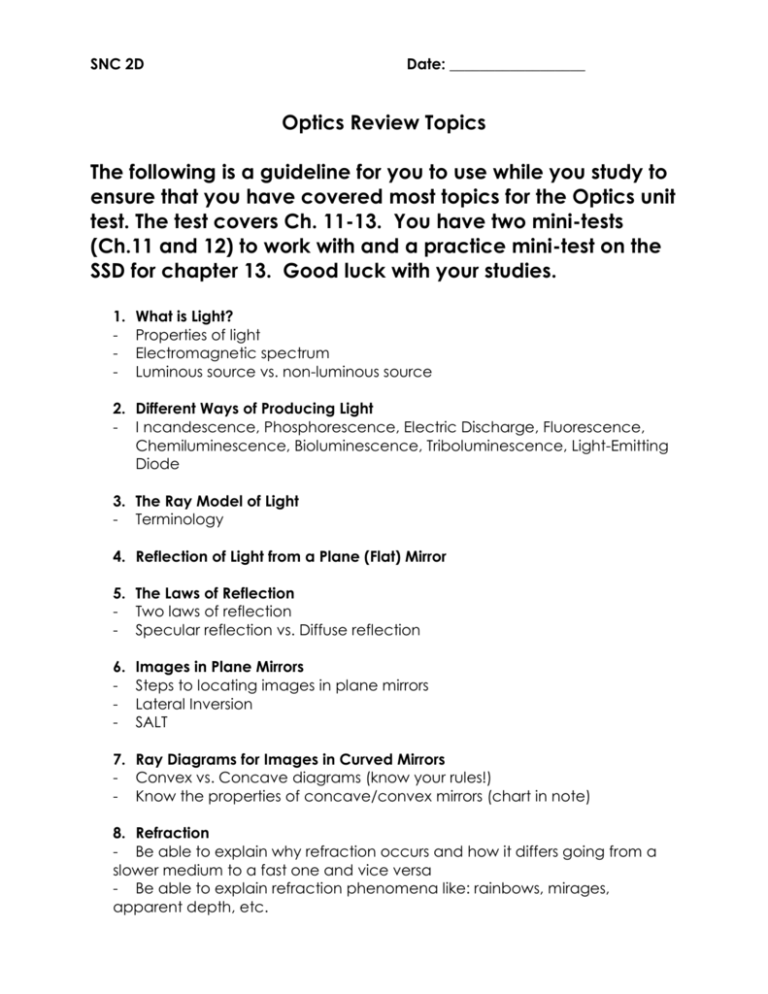
SNC 2D Date: __________________ Optics Review Topics The following is a guideline for you to use while you study to ensure that you have covered most topics for the Optics unit test. The test covers Ch. 11-13. You have two mini-tests (Ch.11 and 12) to work with and a practice mini-test on the SSD for chapter 13. Good luck with your studies. 1. - What is Light? Properties of light Electromagnetic spectrum Luminous source vs. non-luminous source 2. Different Ways of Producing Light - I ncandescence, Phosphorescence, Electric Discharge, Fluorescence, Chemiluminescence, Bioluminescence, Triboluminescence, Light-Emitting Diode 3. The Ray Model of Light - Terminology 4. Reflection of Light from a Plane (Flat) Mirror 5. The Laws of Reflection - Two laws of reflection - Specular reflection vs. Diffuse reflection 6. - Images in Plane Mirrors Steps to locating images in plane mirrors Lateral Inversion SALT 7. Ray Diagrams for Images in Curved Mirrors - Convex vs. Concave diagrams (know your rules!) - Know the properties of concave/convex mirrors (chart in note) 8. Refraction - Be able to explain why refraction occurs and how it differs going from a slower medium to a fast one and vice versa - Be able to explain refraction phenomena like: rainbows, mirages, apparent depth, etc. 9. - Index of Refraction n=c/v (know how to rearrange to solve for v) Know speed of light in air (vacuum) = 3.00x108 m/s Include all steps in problems (formula, units, summary statements, etc…) Enriched class: be able to use Snell’s Law (n=sinR/sinI) 10. Total Internal Reflection - Critical Angle (know for water and diamonds) - Know rules for total internal reflection - Know everyday applications (fibre optic cables, triangular prisms, binoculars, periscopes, etc…) 11. Types of lenses - divergent vs. convergent lenses and how you can differentiate them 12. Lens equation - Be able to use the lens equation and the magnification equation to find di, do, hi, ho, M and f for different lenses. 13. Ray diagrams with lenses - Be able to draw ray diagrams to show where the image of an object will appear. Be able to describe SALT of the image formed. 14. Human Eye - be able to identify the parts of the eye - be able to explain accommodation and how the conditions of myopia, presbyopia, and hyperopia occur and how they can be corrected 15. Applications of lenses - Understand how a microscope, telescope, magnifying glass, projector, camera use lenses to form images.

